Treatment for fever in child. Comprehensive Guide to Treating Fever in Children: Home Remedies and Medical Advice
How to effectively manage fever in children at home. When should you seek medical attention for your child’s fever. What are the safest methods to measure a child’s temperature. How can you provide comfort to a feverish child without medication. Which over-the-counter medicines are appropriate for treating fever in children.
Understanding Fever in Children: Causes and Significance
Fever is a common occurrence in children, often causing concern for parents. But what exactly constitutes a fever? A fever is generally defined as a body temperature of 100.4°F (38°C) or higher. It’s important to note that body temperature can fluctuate throughout the day, typically being lowest in the morning and rising as the day progresses.
Why do fevers occur? Fevers are often the body’s natural response to fighting infections, whether viral or bacterial. They can also be triggered by:
- Recent vaccinations
- Overheating
- Severe sunburn
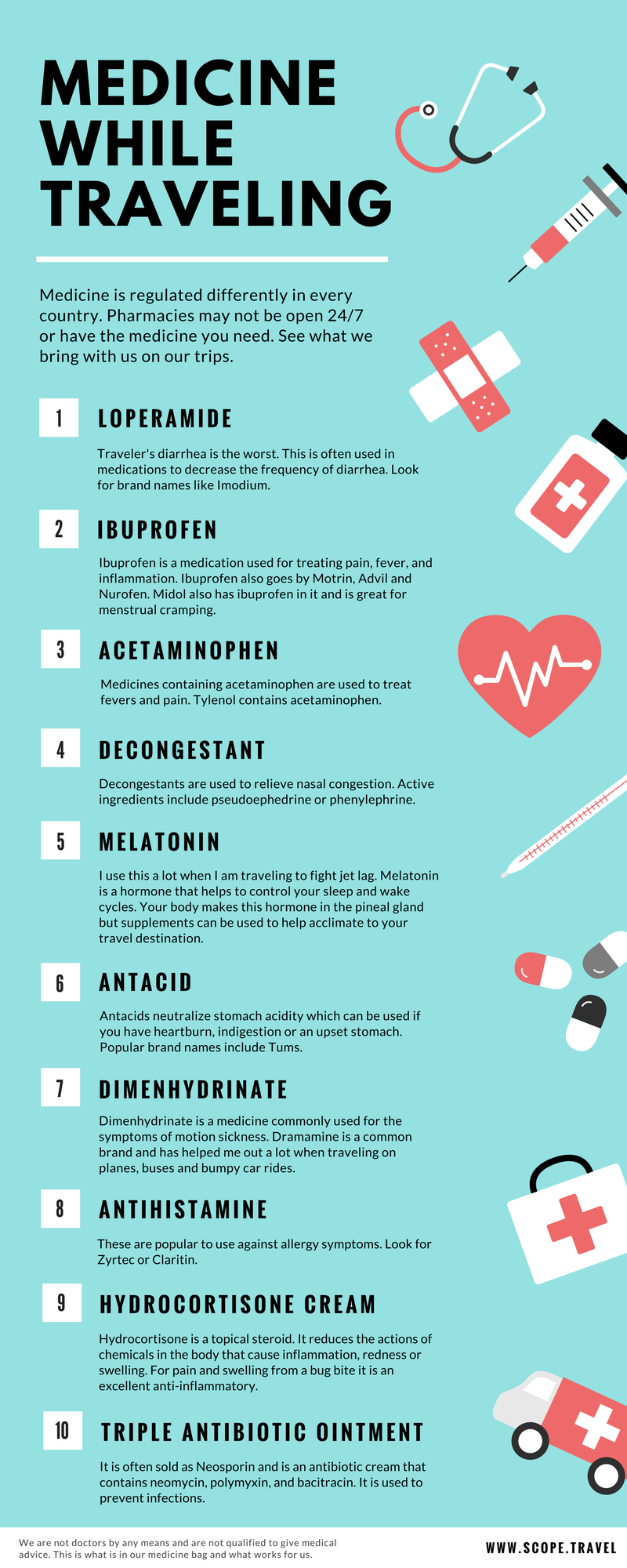
Is a fever always cause for concern? Not necessarily. In many cases, a fever doesn’t require treatment and will resolve on its own as the body fights off the underlying cause.
Accurate Temperature Measurement: Choosing the Right Method
Accurately measuring a child’s temperature is crucial for proper assessment and treatment. Digital thermometers are the recommended tool for temperature measurement. It’s important to note that mercury thermometers should never be used due to safety concerns.
Thermometer Types and Their Accuracy
Different types of thermometers offer varying levels of accuracy:
- Rectal thermometers: Most accurate, especially for infants
- Forehead (temporal artery) thermometers: Second most accurate when used correctly
- Oral and ear (tympanic) thermometers: Accurate if used properly, with some considerations
- Axillary (armpit) thermometers: Least accurate, but can be used for quick checks
Which method should you use for your child? The appropriate method depends on your child’s age:
- Under 3 months: Rectal or forehead thermometers
- 4 months to 6 months: Rectal, forehead, or axillary thermometers
- 6 months to 4 years: Rectal, forehead, ear, or axillary thermometers
- 4 years and older: Oral, forehead, ear, or axillary thermometers
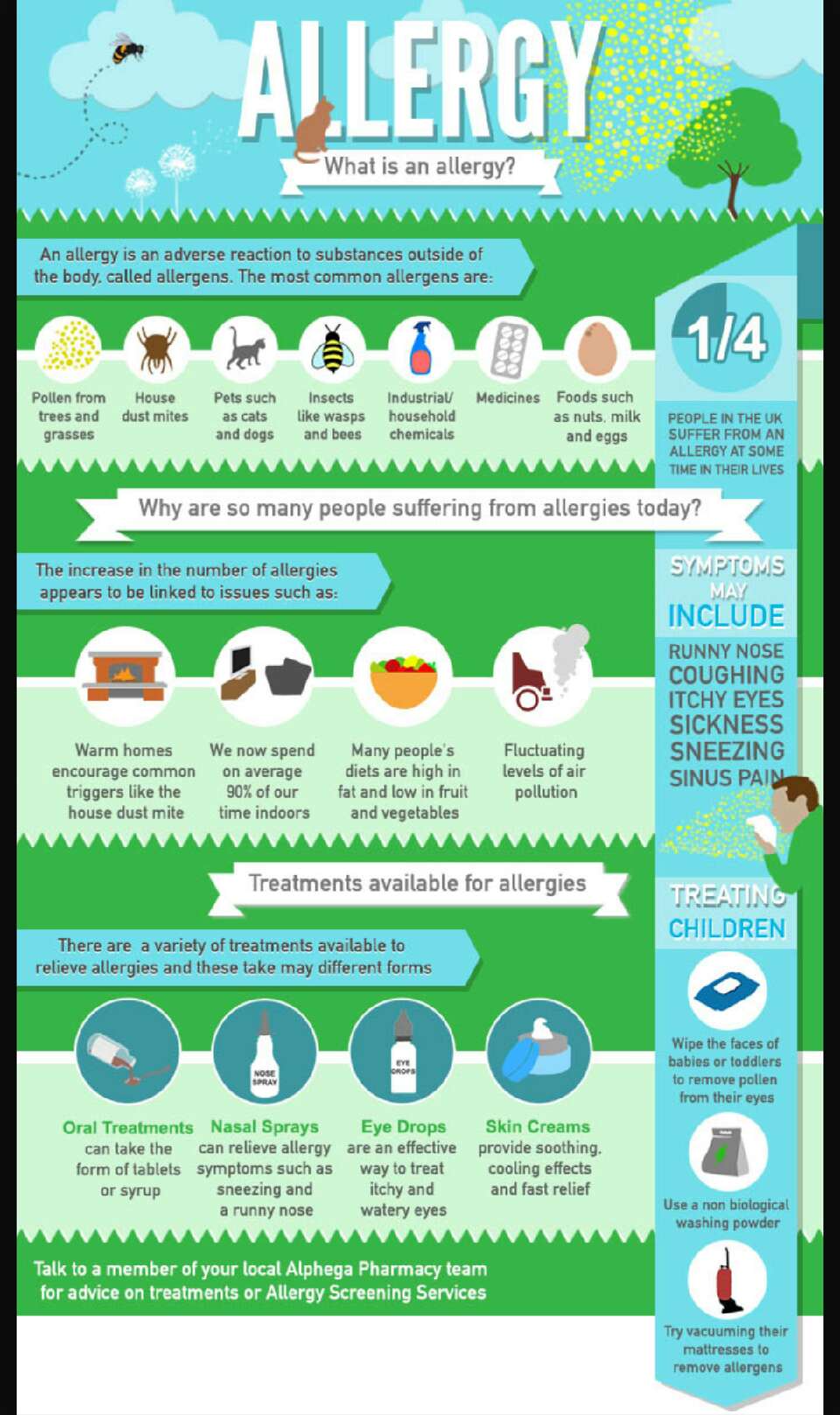
When communicating with healthcare providers, always specify which method you used to measure your child’s temperature.
Home Management of Fever: Comfort Measures and Non-Medicinal Approaches
When your child has a fever, your primary goal should be to keep them comfortable. In many cases, treatment may not be necessary unless the child is experiencing discomfort. Even higher temperatures are generally not dangerous unless the child has a chronic illness.
Dressing and Bedding Considerations
How should you dress a child with a fever? Opt for light clothing to prevent overheating. For babies under one year, use a sleep sack or wearable blanket instead of loose blankets. Children over one year can be covered with a sheet or light blanket while sleeping.
Hydration: A Crucial Element in Fever Management
Proper hydration is essential when managing a fever. What should you offer your child to drink?
- For babies under 1 year: Continue breastfeeding or formula feeding. Avoid giving water, but Pedialyte® can be offered to babies over 6 months.
- For children over 1 year: Offer water, diluted 100% juice, popsicles, or Pedialyte®.

Remember, your child’s appetite may decrease during a fever. Offer soft foods in small amounts, but don’t force feeding.
Sponge Baths: A Cooling Technique
Sponge baths can help reduce fever. How should you administer a sponge bath?
- Use lukewarm water (not too hot or cold)
- Gently sponge water over your child’s body
- Never add alcohol to the bathwater, as it can be dangerous
- Recheck temperature 15 minutes after the bath
- If temperature remains at or above 103°F (39.4°C), repeat the sponge bath
Medication Options for Fever Reduction in Children
Over-the-counter medications can be effective in reducing fever and providing comfort to your child. Which medications are safe for children with fever?
Acetaminophen and Ibuprofen: Safe Options for Children
- Acetaminophen (Tylenol®): Safe for children over 2 months of age
- Ibuprofen (Advil®, Motrin®): Can be used in children over 6 months of age
Always read the label carefully to ensure you’re giving the correct dose based on your child’s weight and age. Is aspirin a safe option for children with fever? Absolutely not. Aspirin should never be given to children as it has been linked to Reye’s syndrome, a potentially fatal condition.

Recognizing When to Seek Medical Attention
While many fevers can be managed at home, there are situations where professional medical care is necessary. When should you call your child’s healthcare provider?
Age-Specific Fever Concerns
- For infants under 3 months: Any temperature of 100.4°F (38°C) or higher requires immediate medical attention
- For children over 3 months:
- Temperature of 104°F (40°C) or above
- Fever above 102°F (38.9°C) lasting more than 2 days or recurring
- Fever that doesn’t respond to treatment
Symptoms Accompanying Fever That Warrant Medical Attention
Regardless of age, seek medical care if your child has a fever and:
- Appears very ill, extremely irritable, or unusually drowsy
- Shows signs of dehydration (dry mouth, sunken eyes, dark urine, dry diapers)
- Experiences severe symptoms like stiff neck, intense headache, severe sore throat, abdominal pain, vomiting, or diarrhea
- Develops an unusual rash
- Has been exposed to very high temperatures (e.g., left in a hot car)
- Has an underlying condition that compromises their immune system
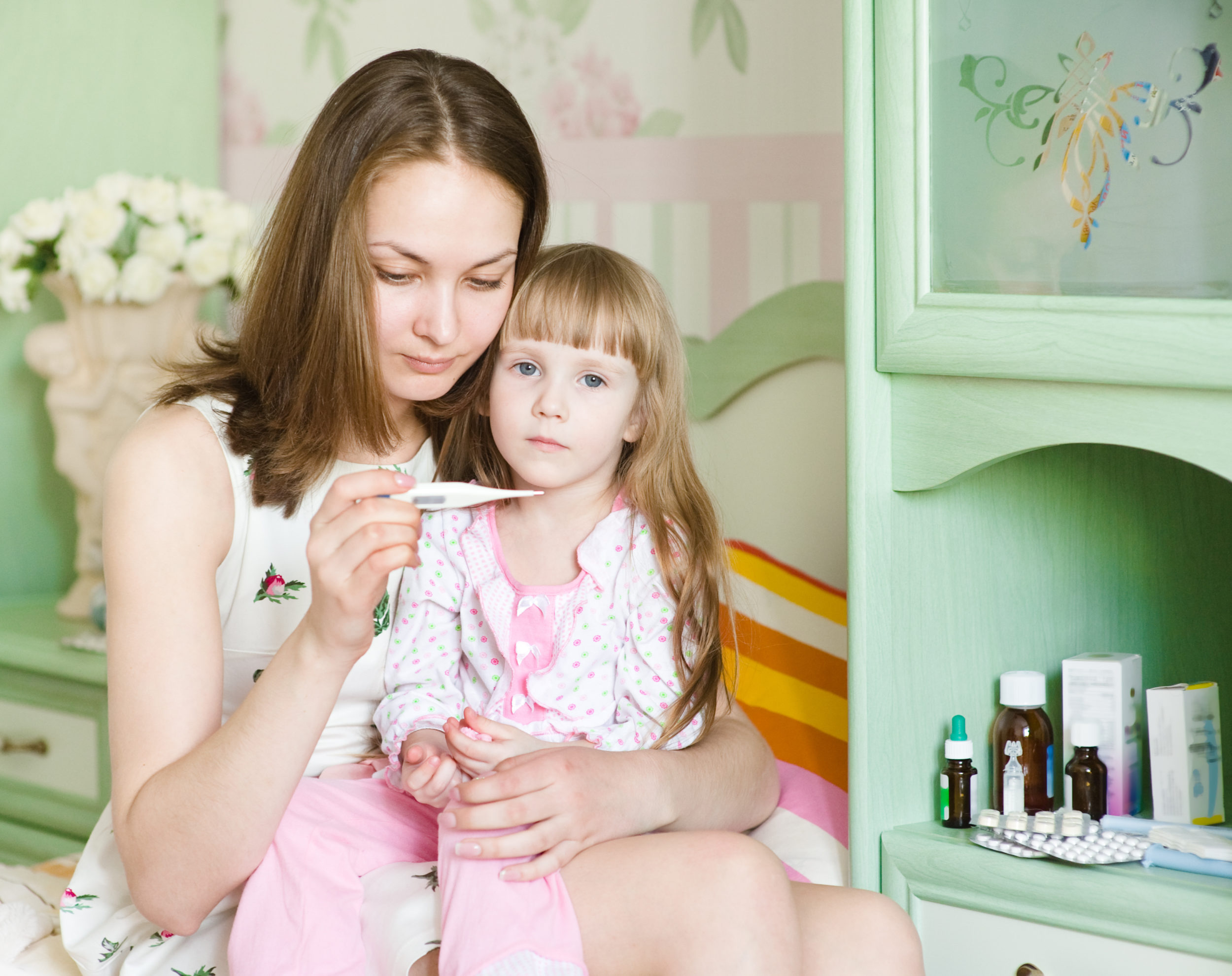
Emergency Situations: When to Call 911
In some cases, immediate emergency care is crucial. When should you call 911 or go directly to the emergency department? Seek emergency care if your child:
- Has difficulty breathing
- Experiences a seizure
- Is hard to wake up or unresponsive
Cultural and Language Considerations in Fever Management
Understanding fever management is crucial for all caregivers, regardless of their cultural or linguistic background. Are resources available in languages other than English? Yes, many healthcare providers offer informational materials in multiple languages to ensure all families have access to vital health information.
For instance, Nationwide Children’s Hospital provides fever management guides in several languages, including:
- Arabic
- Nepali
- Somali
- Spanish
These resources help ensure that language barriers do not prevent families from providing appropriate care for their feverish children.
Technological Advancements in Temperature Monitoring
As technology evolves, new methods for monitoring a child’s temperature are emerging. What innovations are changing the landscape of fever management in children?
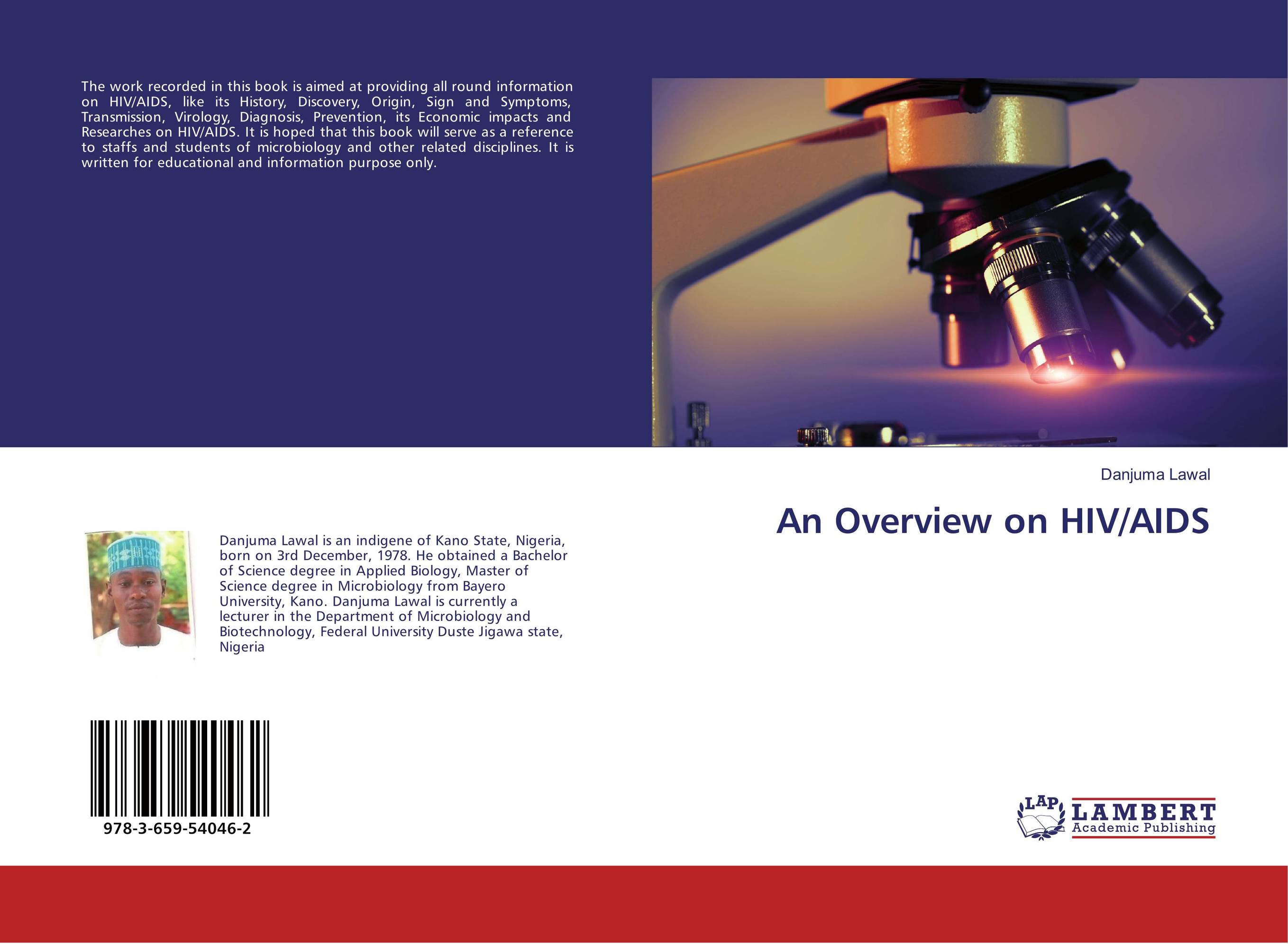
Smart Thermometers and Continuous Monitoring Devices
Recent years have seen the development of smart thermometers that can sync with smartphone apps, allowing for easier tracking of temperature trends over time. Some devices even offer continuous monitoring, alerting parents to significant temperature changes without the need for frequent manual checks.
Wearable Technology for Temperature Tracking
Wearable devices, such as smart patches or bands, are becoming increasingly popular for monitoring a child’s temperature. These devices can provide real-time data and alerts, offering parents peace of mind and potentially allowing for earlier intervention when necessary.
While these technological advancements can be helpful tools, it’s important to remember that they should complement, not replace, attentive parental care and professional medical advice when needed.
Home Treatment and When to See a Doctor
Nationwide Children’s Hospital
Fever is an increase in the body’s temperature above normal. Body temperature is usually lowest in the morning and goes up through the day. Each person’s body temperature can be different. It is hard to give an exact temperature for a fever, but most health care providers agree that a fever is a temperature of 100.4˚ Fahrenheit (F) or 38˚ Celsius (C) or higher.
Fevers can show that the body is fighting an infection from a virus or bacteria. It can also happen after getting a vaccine, from getting overheated, or from a very bad sunburn. Many times, the fever does not need to be treated and will go away on its own.
How to Take a Temperature
The type of thermometer used may make a difference.
- To take a temperature, use a digital thermometer. Never use a mercury thermometer.

- Rectal (in baby’s bottom) thermometers are the most accurate.
- Forehead (temporal artery) thermometers are the next best choice if used the right way.
- Oral (mouth) and ear (tympanic) thermometers can be used if done properly. For oral temperatures, wait 30 minutes after drinking something hot or cold. For ear, wait 15 minutes after coming in from the cold.
- Lastly, an axillary (armpit) temperature can be used as a quick check but it is not very accurate.
The best ways to check your child’s temperature depends on their age.
- Under 3 months: rectal or forehead thermometers
- 4 months or older: rectal, forehead, or axillary thermometers
- Older than 6 months: rectal, forehead, ear, or axillary thermometers
- 4 years old or older: oral (mouth), forehead, ear, or axillary thermometers
Be sure to tell your child’s health care provider which method you used.
Home Treatment
A fever may not need to be treated unless your child is uncomfortable. Even higher temperatures are not usually dangerous unless they have a long-term illness.
- Dress your child in light clothing. Over dressing them can trap the body’s heat and make the temperature go higher.
- Babies under age 1: Dress them in a sleep sack or wearable blanket. Do not put loose blankets over them.
- Children over age 1: While sleeping, cover them with a sheet or light blanket.
- Give extra fluids.
- Babies under age 1: Continue to give breast milk and formula. They should not be given water. If they are older than 6 months, you can give Pedialyte®.
- Children over age 1: Offer extra liquids to drink, like water, diluted 100% juice, popsicles, or Pedialyte.
- Your child may not want to eat much. Offer soft foods often and in small amounts but do not force them to eat.

- Give sponge baths or let your child soak in a tub. Water should be lukewarm, not too hot or cold. Use a wash cloth to sponge the water over your child’s body (Picture 1).
- Do NOT add alcohol to the water. It can be dangerous.
- Recheck your child’s temperature 15 minutes after the bath. If the temperature is 103˚F (39.4˚C) or is going higher, repeat the sponge bath.
- Over-the-counter medicines can help lower a fever. Read the label on the bottle to know the right dose for your child.
- Acetaminophen (Tylenol®) may be used in all children over 2 months.
- Ibuprofen (Advil®, Motrin®) may be used in children over 6 months.
- Do NOT give aspirin to children (Picture 2). Aspirin has been linked to a disease called Reye’s syndrome, which can be fatal.
When to Call the Health Care Provider
Call your child’s health care provider right away if your child:
- Is younger than 3 months of age and has a temperature of 100.
 4˚F (38˚C) or higher.
4˚F (38˚C) or higher. - Is older than 3 months and has a temperature:
- Of 104 ˚F (40 ˚C) or above.
- Above 102˚F (38.9˚C) for more than 2 days or keeps coming back.
- That has been treated to bring it down, but it has not worked.
- At any age, has a fever and:
- Looks very ill, is very fussy, or very drowsy.
- Is not eating or drinking and shows signs of dehydration – dry or sticky mouth, sunken eyes, dark urine, dry diapers, or not urinating.
- Has a stiff neck, bad headache, very sore throat, painful stomach ache, vomiting, or diarrhea.
- Has an unusual rash
- Has been in a very hot place, such as an overheated car.
- Has immune system problems that make them more likely to get sick, such as sickle cell disease or cancer, or takes a medicine that weakens the immune system.
Call 911 or go to the emergency department if your child has trouble breathing, has a seizure, or is hard to wake up.
Fever (PDF), Arabic (PDF), Nepali (PDF), Somali (PDF), Spanish (PDF)
HH-I-105 10/75 Revised 2/22 Copyright 1975, Nationwide Children’s Hospital
You Might Also Be Interested In
Blog
What You Need to Know About Fever and Taking Your Child’s Temperature
Blog
Tylenol Shortage
Blog
Why Patients with Diabetes Have More UTIs
What to Do When Your Kid Has a Fever
Written by R. Morgan Griffin
Morgan Griffin
- What You Should Do
- What You Shouldn’t Do
- When Should You Call the Doctor?
- Tips to Take Your Child’s Temperature
If you’re a parent, it’s a scene that’s all too familiar. You put your hand on your sick child’s forehead and it feels warm. Then the thermometer confirms your suspicion: They’ve got a fever. But if you follow some simple rules you’ll make them more comfortable and keep them safe.
Fever is a defense against infection. Your child’s body is raising its temperature to kill the germs. In most cases it’s harmless and goes away on its own in 3 days.
Acetaminophen can lower your child’s temperature. If they’re older than 2, the dose will be listed on the label. If they’re younger, ask your doctor how much to give them.
Another option is ibuprofen if your child is at least 6 months old.
There’s a lot you can do to make them feel better. Put a cool compress on their head and keep their room at a moderate temperature — not too hot and not too cold. Dress them in one layer of light clothing and offer a light blanket. You can also cool them off with a lukewarm sponge bath.
Dress them in one layer of light clothing and offer a light blanket. You can also cool them off with a lukewarm sponge bath.
And don’t forget — make sure they drink a lot of fluids.
Never give your child aspirin. It can cause a serious condition called Reye’s syndrome.
Avoid combination cold and flu remedies in young kids. They shouldn’t be used in children under age 4. In older kids, it’s unclear how well they work.
If you decide to use a cold medicine, check with your pediatrician to be sure your child is old enough for the type of medicine you’re considering. According to the FDA, no child under the age of 2 should be given any kind of cough or cold product that contains a decongestant or antihistamine, and caution should be used even in children who are older than 2. In addition, no child under 4 years of age should be given a product that combines cough and cold medicines. The possible side-effects can be serious and even life-threatening.
If the doctor says it’s OK to use a cough or cold medicine, then read the label before you buy and pick the one that most closely matches your child’s symptoms. Don’t switch back and forth between different medications without your pediatrician’s OK.
Don’t switch back and forth between different medications without your pediatrician’s OK.
Don’t use an icy cold bath or rub your child’s skin with alcohol. Either can actually drive a fever up.
And even if your child has the chills, don’t bundle them up with thick blankets or clothes.
Usually, you don’t need to take your sick child to the doctor. But sometimes fever can be a serious warning sign. Call your pediatrician if your child:
- Has a temperature of 104 F or higher
- Is under 3 months old and has a temperature of 100.4 F or higher
- Has a fever that lasts for more than 72 hours (or more than 24 hours if your child is under age 2)
- Has a fever along with other symptoms such as a stiff neck, extremely sore throat, ear pain, rash, or severe headache
- Has a seizure
- Seems very sick, upset, or unresponsive
How often do you need to check? That depends on the situation. Ask your pediatrician. Usually, you don’t need to take your child’s temperature obsessively or wake them up if they’re sleeping peacefully. But you should do it if their energy seems low or if your child has a history of seizures with fever.
But you should do it if their energy seems low or if your child has a history of seizures with fever.
Which thermometer is best for kids? Digital ones are best. They can be used in their mouth, rectally, or under the arm.
For young children, a rectal temperature is most accurate. If your kids are at least 4 or 5 years old, you can probably get a good reading with a thermometer in the mouth. Under the arm is less reliable but it’s easier to do. Remember to add a degree to an underarm reading to get a more accurate number.
Top Picks
types, symptoms, diagnosis, treatment, clinical recommendations
Fever is insidious: it may not threaten the child’s health at all, or it may be a symptom of a transient dangerous infection.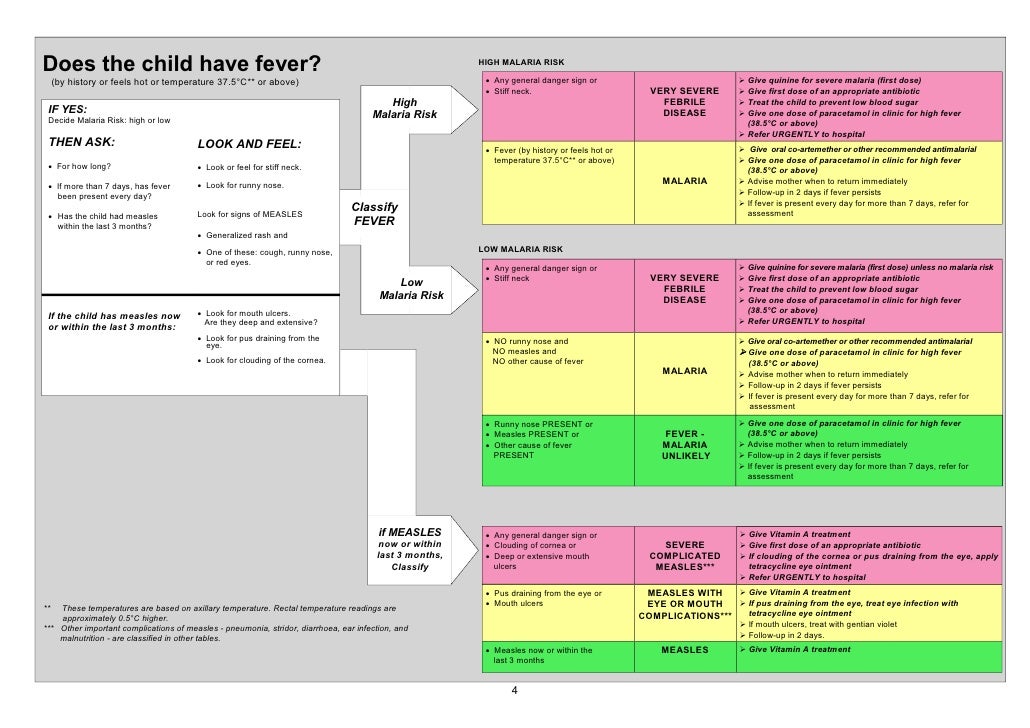 When the temperature rises, you should understand the situation, find the cause and constantly monitor the changes.
When the temperature rises, you should understand the situation, find the cause and constantly monitor the changes.
Heat exchange in children is somewhat different than in adults. At birth, all babies have a special brown fat, which is quickly replaced by ordinary white fatty tissue. Brown fat contains many mitochondria. They interact with fatty acids and release heat when needed. Since babies are very vulnerable in the first days of life, this mechanism protects them from hypothermia.
In the course of life, the mechanisms of heat transfer in children continue to change, they become more and more similar to the thermoregulation of adults. In fact, the final development of the system ends only by 8 years. Until this age, children lose heat worse and at the same time produce it better. Because of this feature, overheating is more dangerous for the baby, and the entire thermoregulation system is much less stable. Temperature jumps in children happen often, and the reasons can be very different.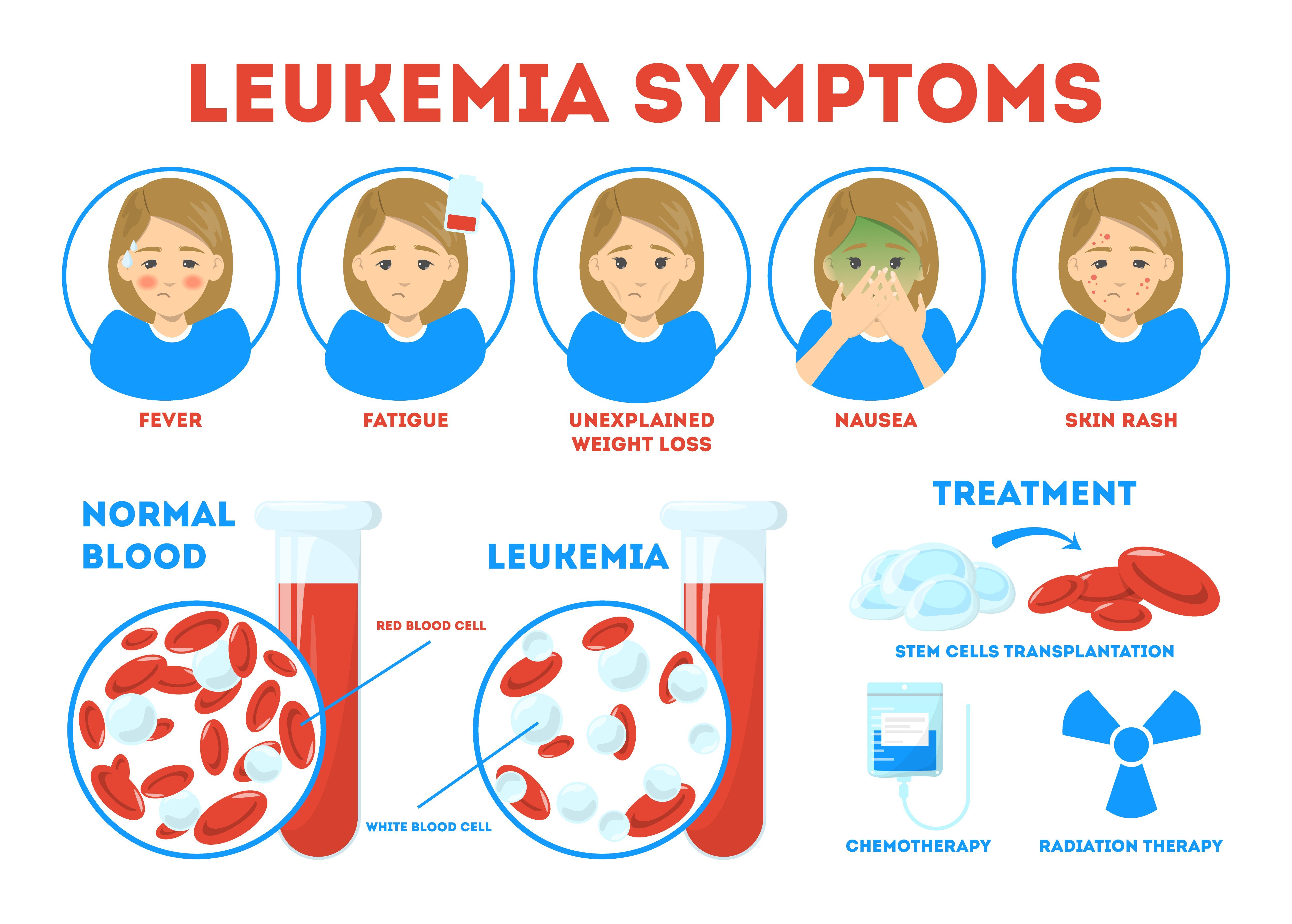
What is fever
Body temperature above 37°C is considered hyperthermia, i.e. fever. When measuring temperature in the rectum, fever is considered to be above 38°C.
The mechanism of fever is as follows: pyrogens, substances that stimulate fever, provoke the release of anti-inflammatory substances. Pyrogens are most often of an infectious nature. They act on the thermoregulatory center, which becomes less sensitive to thermal impulses. The whole system is rebuilt to work at a higher level: heat production increases and heat transfer decreases, which leads to a general increase in body temperature.
At the same time, many viruses and bacteria in such a “heat” reduce the rate of reproduction, and the immune system increases the synthesis of antibodies. The activity of leukocytes, inflammatory cells, also increases. At its core, an increase in temperature is a protective reaction of the body, which allows you to quickly defeat the infection and activate the immune system.
Symptoms of fever in children
An increase in body temperature immediately affects the well-being of the child. The skin becomes hot, wet, the baby has weakness, chills, headache, he cries. If the fever is severe, then delirium, confusion and convulsions are possible.
Clinically, fever in children is divided into “pink” and “pale”.
The first is the most common and relatively harmless. It is provoked mainly as a reaction to an infection, despite the high numbers on the thermometer, the child usually feels fine. At the same time, the baby’s skin is red, hot, moist, legs and arms remain warm. The higher the temperature, the more often the child begins to breathe, the pulse quickens.
Pale fever is much more dangerous. Due to vasospasm, the skin turns white, may be covered with “marble” cyanotic spots. The skin is hot, but dry, the child hardly sweats. Hands and feet are cold, shortness of breath may begin. There are problems with pressure: it rises sharply, and then can drop almost to a state of shock. At the same time, the child is excessively lethargic, it is impossible to wake him up. Or, on the contrary, overexcited, he is disturbed by hallucinations and delirium.
There are problems with pressure: it rises sharply, and then can drop almost to a state of shock. At the same time, the child is excessively lethargic, it is impossible to wake him up. Or, on the contrary, overexcited, he is disturbed by hallucinations and delirium.
“Pale” fever is characteristic of severe bacterial infections. It requires special attention, as it can cause serious complications.
Causes of fever in children
The body temperature of young children is unstable. It can fluctuate from emotional overexcitation, fatigue. At an older age, hormonal failure during puberty can also cause fever.
But the main causes are various infections. Injuries, internal hemorrhages, burns and bruises, overheating in the sun and dehydration can also cause fever. The reasons can be very serious: tumors, genetic diseases, hormonal disorders.
Fever is usually accompanied by a sharp short rise in temperature, which is stopped by drugs, but can last for several hours. There are long-term conditions, while the temperature rises slightly, but often. One such example is thermoneurosis. To determine the exact cause, you need to call a pediatrician (1).
There are long-term conditions, while the temperature rises slightly, but often. One such example is thermoneurosis. To determine the exact cause, you need to call a pediatrician (1).
Treatment of fever in children
Almost always the body temperature rises as a reaction to an infection: bacteria, viruses. In some cases, there are few specific symptoms at the very beginning of the disease (for example, with meningococcal infection). At the same time, the disease develops rapidly and in some cases can even lead to death, so you should always pay increased attention to fever.
Treatment will be specific, aimed at eliminating the source of infection. For this, depending on the cause, antibiotics, antiviral drugs, as well as their own immune forces can be used. To reduce the temperature with threatening numbers, antipyretics are used in various forms. Dosage and choice of drug depend on the age of the child.
Photo: @karolina-grabowska, pexels. com
com
A slight and short-term increase in temperature may be associated with nervous tension, overheating, teething. It is important to know that the very fact of teething cannot cause a significant jump in temperature – normally this process is quite natural and does not cause fever. If you are teething and have a high fever, it is almost certainly not your teeth that are causing you to relax (2). You need to establish the cause, remember what happened before the rise in temperature, which could cause a fever. If it is overheating, the child should be moved to a cool place, give water, cool the head, wipe the body with water. Do not wipe the skin with alcohol, vodka or too cold water and ice. Severe cold constricts blood vessels and heat transfer is still reduced, the body cannot cool. And alcohol can be partially absorbed through the skin, its vapors adversely affect the baby.
The temperature can drop badly from dehydration, so sometimes you even have to force a sick child to drink. There is a special formula, according to which, with each degree of excess temperature, the volume of liquid that needs to be taken increases. For every degree of elevated temperature, 10 ml of water per kilogram of the child’s weight is added.
There is a special formula, according to which, with each degree of excess temperature, the volume of liquid that needs to be taken increases. For every degree of elevated temperature, 10 ml of water per kilogram of the child’s weight is added.
Diagnostics
Various thermometers, including mercury and electronic, are used to measure temperature. The latter are not very accurate, the error in degrees in individual models can be large. Mercury thermometers must be used very carefully so as not to break.
Temperature in children is measured under the arm, in the groin or in the rectum. Shake the thermometer to 35°C, wipe it with a disinfectant and insert it under the arm or into the skin fold (it must first be wiped) in the groin. You need to hold the thermometer by pressing the bent arm or leg of the child for about 10 minutes.
The most accurate way is to measure the temperature in the rectum. In children under 2 years old, this is the main method. Rectal temperature is always higher than on the surface of the body. Normal rectal temperature is considered to be 37.3-37.7. Before the measurement, it will not be superfluous to do a cleansing enema, but you can do without it. The thermometer must first be disinfected, the tip should be lubricated with petroleum jelly and inserted into the rectum to a depth of no more than 5 cm. Then squeeze the child’s buttocks with your hands and hold for about 5 minutes.
Rectal temperature is always higher than on the surface of the body. Normal rectal temperature is considered to be 37.3-37.7. Before the measurement, it will not be superfluous to do a cleansing enema, but you can do without it. The thermometer must first be disinfected, the tip should be lubricated with petroleum jelly and inserted into the rectum to a depth of no more than 5 cm. Then squeeze the child’s buttocks with your hands and hold for about 5 minutes.
Modern methods of treatment
The most reliable way to quickly reduce the temperature is to take antipyretic drugs. They are also called antipyretics.
Do not give such medicines at every temperature jump, and even more so as a preventive measure – it will not work. Usually, antipyretics are used after 38-39 ° C, before this threshold the child feels quite well, and a slight fever helps to cope with the disease.
When convulsions appear, under the age of 2 months, with very poor health, you need to focus on the child’s feelings, and not on a thermometer. Sometimes antipyretics are required for mild fever, and sometimes a temperature of 39°C the child tolerates normally.
Sometimes antipyretics are required for mild fever, and sometimes a temperature of 39°C the child tolerates normally.
The fever should subside within about half an hour after taking the drug. If the antipyretic in the form of tablets, gels and syrups was ineffective, intramuscular or intravenous injections are usually administered. Persistent fever, which is not stopped for a long time by drugs, is the reason for calling an ambulance. Hospitalization may be required (3).
Photo: pixabay.com
Prevention of fever in children at home
Fever is possible with any infectious disease (4). It’s impossible to avoid it. It is only necessary to monitor the condition of the child, do not wrap him in blankets, give a sufficient amount of liquid.
When the fever subsides, there will be active sweating, all clothes and bedding may become wet. To make the child more comfortable and not get sick even more, change clothes more often.
Popular Questions and Answers
Every parent is concerned about a sudden rise in temperature in a child. Having understood the mechanism of the occurrence of fever and learning what to do in such a situation, parents will be able to help the baby without unnecessary worries. What to do when such a problem occurs, will tell pediatrician Daria Schukina .
Having understood the mechanism of the occurrence of fever and learning what to do in such a situation, parents will be able to help the baby without unnecessary worries. What to do when such a problem occurs, will tell pediatrician Daria Schukina .
Is it possible to treat fever in children with folk remedies?
You can use all the same plentiful drinking and rubbing, everything else from the “folk” is ineffective.
What are the complications of fever in children?
The most common complication of fever in young children with this predisposition is convulsions. But more often these are single episodes that are absolutely not dangerous and do not require special examination if they do not recur in the future and without temperature. Otherwise, high temperature is not our enemy, it is a defensive reaction of the body. It is important to understand what lies behind the fever, and whether its cause is dangerous in itself.
Is it always necessary to lower the temperature?
It is recommended to bring down the temperature above 38.:max_bytes(150000):strip_icc()/scarlet-fever-overview-1958805_fin-b03dd028ce63461c8bbdecef8eff4ff5.png) 5°C. However, if the child has 39 ° C, but feels good, he plays and tolerates it normally, you can limit yourself to drinking and rubbing. It may be the opposite situation: the thermometer shows less than 38 ° C, and the state of health is terrible, the child does not play, but lies “like a rag” – then it makes sense to give an antipyretic.
5°C. However, if the child has 39 ° C, but feels good, he plays and tolerates it normally, you can limit yourself to drinking and rubbing. It may be the opposite situation: the thermometer shows less than 38 ° C, and the state of health is terrible, the child does not play, but lies “like a rag” – then it makes sense to give an antipyretic.
First of all, we focus not on the numbers on the thermometer, but on the general condition of the child. For children with chronic diseases of the nervous system, heart defects, kidney diseases, there are recommendations for the temperature limit – they are lower than in children without serious pathologies.
When should an ambulance be called?
When there are threatening symptoms, except for fever (a rash that does not disappear with pressure, impaired consciousness, etc.), or all options for bringing down the temperature have been exhausted, more than 1-2 hours have passed since the moment of taking the antipyretic, and the temperature has not decreased by a tenth . But you need to understand that the ambulance is limited in its actions, in their power, most often, they only offer you to be hospitalized.
But you need to understand that the ambulance is limited in its actions, in their power, most often, they only offer you to be hospitalized.
Often the cause of poor temperature reduction is an insufficient dosage of antipyretic or lack of fluid. And never expect a temperature from 39.5 ° C suddenly dropped to 37.5 ° C – this is very difficult for the body. A minimal decrease from 39.5°C to 39°C is already a sufficient effect.
Sources
- Unexplained fever syndrome in pediatric practice. Pikuza O. I., Suleimanova Z. Ya., Zakirova A. M., Pikuza A. V., Rashitov L. F. // Modern problems of science and education.
URL: https://science-education.ru/ru/article/view?id=28327 - Symptoms of eruption of milk teeth and possible routes of pharmacological action. Kazyukova T. V., Radtsig E. Yu., Pankratov I. V. // RMJ. 2015.
URL: https://www.rmj.ru/articles/pediatriya/Simptomy_prorezyvaniya_molochnyh_zubovi_vozmoghnye_puti_farmakologicheskogo_vozdeystviya/ - Feverish child.
 Clinical guidelines for pediatricians. Edited by A. A. Baranov, V. K. Tatochenko, M. D. Bakradze.
Clinical guidelines for pediatricians. Edited by A. A. Baranov, V. K. Tatochenko, M. D. Bakradze.
URL: https://akusher-lib.ru/wp-content/uploads/2019/07/Lihoradyashhij-rebenok.pdf - Modern approaches to the treatment of fever in children with infectious pathology. Timchenko V. N., Pavlova E. B. // Medical scientific and practical portal “Attending Doctor”.
URL: https://www.rbc.ru/society/17/10/2022/634a00149a7947013247bb9b
White fever in a child – causes, symptoms, treatment
Contents
- 1 White fever in children: symptoms, treatment and prevention
- 1.1 Symptoms of white fever in a child
- 1.2.1 What is white fever?
- 1.2.2 Why does white fever occur?
- 1.2.3 How does white fever develop?
- 1.3 Who is at risk for white fever in children
- 1.4 How to diagnose white fever in a child
- 1.5 Treatment of white fever in a child: what drugs will help
- 1.
 5.1 Antibiotics
5.1 Antibiotics
901 01 1.5.2 Antipyretics
- 1.
- 1.5.3 Antivirals
- 1.1 Symptoms of white fever in a child
- 1.6 Child recovery from white fever: what you need to know
- 1.6.1 Child nutrition during recovery
- 1.6.2 Sleep and rest during the recovery period
- 1.6.3 Medicines and prevention of white fever in children
- 1.7 Complications of white fever in children
- 1.8 Prevention of white fever in children: advice from doctors 90 103
- 1.9 What to do if the child has signs of white fever
- 1.10 Related video:
- 1.11 Q&A:
- 1.11.0.1 What is white fever in a child?
- 1.11.0.2 How is white fever transmitted?
- 1.11.0.3 How is white fever diagnosed in a child?
- 1.11.0.4 How is white fever treated in a child?
- 1.11.0.5 How can white fever be prevented?
- 1.11.0.6 How quickly does white fever resolve in a child?
- 1.12 Comparing white fever with other types of fever in children
- 1.
 13 How to prevent white fever in a child children. Find out how to prevent the development of the disease and how to properly care for your child during illness.
13 How to prevent white fever in a child children. Find out how to prevent the development of the disease and how to properly care for your child during illness.White fever is a disease caused by a virus transmitted by mosquito bites. Although rare in developed countries, it is a serious health hazard in parts of Africa.
When a child is infected with white fever, the brain becomes inflamed and can be fatal if not detected and treated in time. Symptoms of white fever in a child can be very similar to other diseases, so it is important to see a doctor at the first sign of illness.
This resource is about how to recognize the symptoms of white fever in a child, what causes it, and what treatment and prevention methods you can apply to keep your child healthy.
Symptoms of white fever in a child
High body temperature is one of the most common symptoms of white fever in a child. It is possible to increase the temperature up to 40 degrees Celsius.
 The temperature is difficult to bring down with conventional antipyretic drugs. It is important to see a doctor immediately if you have a high fever.
The temperature is difficult to bring down with conventional antipyretic drugs. It is important to see a doctor immediately if you have a high fever.A rash-like rash is another major symptom of white fever in a child. It can appear on the entire body of the child, including the mucous membranes. The rash can be pronounced, sometimes taking on a hemorrhagic character.
Headache and vomiting are other symptoms that occur in children suffering from this disease. They usually appear in the early stages of the disease. Headache is specific to this form of fever and is difficult to relieve by conventional means. Vomiting is associated with the presence of toxins in the baby’s blood.
- Abdominal swelling is another symptom of white fever.
- Bleeding – internal and external bleeding is characteristic of this form of fever. They can present with bleeding from the nose, eyes, mouth, and urinary tract.
 Bleeding can lead to severe anemia.
Bleeding can lead to severe anemia.
Deterioration of the patient’s condition – if the child does not receive timely treatment, then his condition may deteriorate significantly. The sudden onset of acute abdominal pain, convulsions and impaired consciousness should not be ignored.
White fever in a child: what is it?
Positive
0%
Negative
0%
What is white fever?
White fever is a dangerous viral disease transmitted by the bites of infected mosquitoes. It can lead to serious disturbances in the functioning of the central nervous system, damage to internal organs, and in some cases, death. White fever is the leading cause of death in parts of Africa and South America.
Why does white fever occur?
White fever is caused by a virus transmitted by blood-sucking insects. Infected mosquitoes transmit the virus to humans by sucking blood. The virus enters the bloodstream and begins to multiply in various organs.
 Symptoms of white fever may begin insidiously, but over time they worsen and the patient needs immediate medical attention.
Symptoms of white fever may begin insidiously, but over time they worsen and the patient needs immediate medical attention.What is the mechanism of development of white fever?
White fever virus causes inflammation in various organs. It penetrates the tissues and affects them, which causes hypoxia – a lack of oxygen. As a result, various symptoms occur, such as high body temperature, headache, nausea, vomiting, weakness, and loss of appetite. If left untreated, white fever can lead to kidney failure, bleeding, fatigue, and death.
Who is at risk for white fever in children
White fever is a dangerous viral disease that can lead to serious consequences in children and adults. However, not all children are at risk of contracting this disease, there are certain categories that are most susceptible to infection.
The most vulnerable group is children living in regions with high rates of white fever, such as South America and Africa.
 Children who travel with their parents to these regions are especially often infected.
Children who travel with their parents to these regions are especially often infected.Children who have not been vaccinated against white fever are also at risk. The white fever vaccine is recommended for anyone planning to visit areas where the disease is common.
- Babies younger than 9 months are also at risk of contracting white fever
- Babies who have immune system disorders such as diabetes or HIV infection are also more susceptible to this virus
- Babies who have liver problems may also be more likely to contract white fever
In any case, if your child develops signs of white fever such as fever, headache and muscle weakness, see a doctor right away. Rapid treatment at an early stage of the disease can prevent the development of dangerous complications.
How to diagnose white fever in a child
White fever is a dangerous viral disease that can lead to serious consequences and even death if not diagnosed in a timely manner.

White fever is caused by a virus transmitted by mosquito bites. Symptoms may include high fever, headache, nausea, vomiting, confusion, and even bleeding.
How to diagnose white fever in a child:
- Check for symptoms such as fever, headache, nausea or vomiting.
- Look for any bleeding or skin rash.
- Do laboratory blood tests to check for the presence of the virus in the body.
If you suspect that your child may be infected with white fever, contact your doctor immediately. Faster diagnosis and treatment can save your child’s life.
Treatment of white fever in a child: what drugs will help
Antibiotics
One of the main groups of drugs used in the treatment of white fever are antibiotics. They are designed to fight the bacteria that cause disease. Depending on the severity of white fever, your doctor may prescribe a broad-spectrum antibiotic or a specific antimicrobial agent. It is necessary to strictly follow the doctor’s recommendations on the dosage and duration of taking antibiotics, as improper use can lead to side effects or even resistance of microorganisms to the drug.

Antipyretics
High body temperature in a child with white fever may be accompanied by a severe headache, as well as general malaise and weakness. In this case, fever-lowering medications can help reduce symptoms and improve the child’s condition. Paracetamol and ibuprofen are the most popular among them.
Antivirals
If white fever is caused by viruses, antivirals can be used. They allow you to fight viruses and speed up the healing process. The doctor may prescribe such drugs if the symptoms of the disease do not go away for a long time and the body does not respond to antibiotics. Treatment with antiviral drugs may be an additional option in the complex therapy of white fever.
- The use of any drugs must be agreed with the pediatrician.
- It is not recommended to take antibiotics for more than three days without consulting a doctor.
- In case of illness, it is necessary to provide the child with peace and a comfortable environment.
 He must receive enough fluid and nutrients.
He must receive enough fluid and nutrients.
Child white fever recovery: what you need to know
Child nutrition during recovery
During the recovery period after white fever, special attention should be paid to the child’s nutrition. He should eat a varied and wholesome food that will help the body recover and support immunity. It is recommended to increase the intake of fruits, vegetables, protein foods and fluids.
- Fruits and vegetables are rich in vitamins and minerals, which helps the body recover from illness
- Protein food contains amino acids necessary for tissue repair and regeneration
- Fluid helps to remove waste and toxins from the body, which also speeds up the recovery process
Sleep and rest during the recovery period
Sleep and rest is one of the most important aspects of recovery from white fever. The child should sleep and rest normally so that the body can focus on fighting the disease and restoring strength.
 It is recommended not to load the child with physical exercises or active games during the recovery period.
It is recommended not to load the child with physical exercises or active games during the recovery period.Medications and prevention of white fever in a child
After a white fever, the doctor may prescribe medicines to help the child recover faster. It is important to strictly follow the instructions of the doctor and not to exceed the dose of medication. White fever prophylaxis is also recommended to reduce the chance of reinfection. This may include vaccinations, use of mosquito nets and repellents.
Complications of white fever in a child
Hemorrhagic syndrome is one of the most serious complications of white fever. The regulation mechanism is disrupted in the ability of blood to clot, so the patient’s muscles begin to gently collapse, bleed, and brown spots form on the skin and mucous membranes. If time syndrome is diagnosed and treated early, the chances of recovery are higher.
Brain weakness is the degree of having units ready to use the property called whitish intoxication when the body temperature rises to 40°C for an indefinite period of time.
 This fact can also create problems with behavior, loss of imagination and other activities that are not typical of a healthy child.
This fact can also create problems with behavior, loss of imagination and other activities that are not typical of a healthy child.Liver failure is another possible complication of white fever. In the course of the disease, the liver becomes very sick and may fail. Dependent doses may be at levels of increased bile, rapid turbidity, hepatitis, and tenderness on the right side of the body. Treatment should begin as soon as possible to reduce the chance of developing this complication.
- Pneumonia is an infectious disease that affects the lungs. Its development causes a new weakening of the child’s immunity. The patient begins to suffer from cough, weakness and fever.
- Obstetrical complications – women who have had white fever during pregnancy are subjected to callous controls to check whether the child’s birth plans have been impaired by the diseases and whether the child’s movement is impaired. Additional care and monitoring is required for the health of the newborn if the father is also infected.

Preventing white fever in children: doctor’s advice
Give your child high quality food. A healthy diet is essential to maintain a child’s immune system and avoid vitamin and mineral deficiencies. Include fruits and vegetables, meat, fish, eggs, and healthy fats in your diet.
Help your child maintain personal hygiene. Regular washing of hands and teeth, brushing the tongue and ears all help to avoid diseases such as white fever. Teach your child proper nose inflation techniques and the use of handkerchiefs.
Vaccinate children against appropriate diseases. Vaccinations not only help prevent diseases, but also help reduce the risk of complications if infected. Check with your child’s pediatrician to find out what vaccinations they need.
Avoid child contact with infected people. White fever is transmitted through coughing, sneezing and direct contact with a person who is infected with the disease.
 If the child has contact with the patient, it is recommended to immediately consult a doctor and take the child for a special examination.
If the child has contact with the patient, it is recommended to immediately consult a doctor and take the child for a special examination.Stay up to date with new advice and knowledge about white fever and its treatment. Communicate with your pediatrician, follow the news on the topic. The more you know about this disease, the more likely you are to avoid it.
What to do if your child has signs of white fever
White fever is a dangerous acute infectious disease that occurs with high fever, severe headaches, nausea and vomiting. If a child has these symptoms, you should immediately contact an infectious disease specialist or a hospital that specializes in the treatment of white fever.
Do not take headache pills or antipyretic drugs before going to the doctor, as they can make diagnosis difficult and complicate treatment.
Parents need to provide their child with a long and quality sleep, control his nutrition, give him enough water and avoid spicy, fatty, smoked and sweet foods, which can aggravate the patient’s condition.

White fever is treated with antibiotics, fever reducers, and antivirals prescribed by a doctor, depending on the severity of the child’s condition. It is also important to monitor hygiene and, if necessary, disinfect.
In addition to drug therapy, it is necessary to provide psychological support to the child. It is necessary to explain to him that the disease is temporary and that he will definitely recover.
Failure to consult a doctor in time can lead to serious complications and even death. Therefore, if your child has symptoms of white fever, do not postpone the visit to the doctor until later. Act immediately to start treatment at the very beginning of the disease.
Related videos:
Q&A:
What is white fever in a child?
White fever is an infectious disease transmitted by mosquitoes and causes a range of symptoms such as fever, headache, nausea and vomiting.
 Children with white fever may also have rashes and bleeding.
Children with white fever may also have rashes and bleeding.How is white fever transmitted?
White fever is transmitted by the bite of an infected mosquito. Mosquitoes become infected with the white fever virus when they drink blood from an infected person or animal. The disease is not transmitted from person to person.
How is white fever diagnosed in a child?
White fever is diagnosed by testing the blood for antibodies to the white fever virus. Other tests may also be required, such as urinalysis and headache spectral analysis.
How is white fever treated in a child?
Treatment of white fever consists of supportive care such as fluid therapy and temperature control. Some patients may require hospitalization and treatment in a hospital. There are currently no specific drugs for the treatment of white fever. The use of acetaminophen and other analgesics must be coordinated with the doctor.
How can white fever be prevented?
Mosquito repellent is the main way to prevent white fever.
 This includes using repellents, wearing body coverings (especially in the evening and at night) and using mosquito nets on windows and doors. Vaccination is also an effective way to prevent white fever.
This includes using repellents, wearing body coverings (especially in the evening and at night) and using mosquito nets on windows and doors. Vaccination is also an effective way to prevent white fever.How quickly does white fever resolve in a child?
The duration of white fever can vary from a few days to several weeks, depending on the severity of the illness. It is recommended to consult a doctor when symptoms of white fever appear in order to receive timely diagnosis and treatment.
Comparison of white fever with other types of fever in children
White fever is an acute viral infection transmitted by mosquito bites. It leads to flu-like symptoms, including fever, headache, muscle aches and nausea. This type of fever is associated with serious complications such as bleeding and acute pancreatitis.
Another type of fever in children , often caused by bacteria, is known as typhoid fever. This infection leads to high fever, headache, severe weakness and nausea.
 If left untreated, it can cause serious complications such as peritonitis and sepsis.
If left untreated, it can cause serious complications such as peritonitis and sepsis.Malaria is another type of fever caused by the bites of parasitic mosquitoes. It leads to fever, severe headaches, loss of appetite and nausea. If left untreated, it can lead to seizures and coma.
Dengue is a mosquito-borne infection that causes high fever, migraine, eye inflammation and severe muscle pain. This type of fever can lead to complications such as bleeding and seizures.
While each type of fever has its own characteristic symptoms, all of them can be dangerous and require immediate treatment. If you or your child has a fever and other symptoms, don’t wait for them to go away on their own. See your doctor for fast and effective treatment.
How to prevent white fever in a child
White fever is a dangerous disease caused by a virus transmitted by mosquitoes. To prevent the disease, a number of measures must be taken:
- Inoculation .




 4˚F (38˚C) or higher.
4˚F (38˚C) or higher. Clinical guidelines for pediatricians. Edited by A. A. Baranov, V. K. Tatochenko, M. D. Bakradze.
Clinical guidelines for pediatricians. Edited by A. A. Baranov, V. K. Tatochenko, M. D. Bakradze.  5.1 Antibiotics
5.1 Antibiotics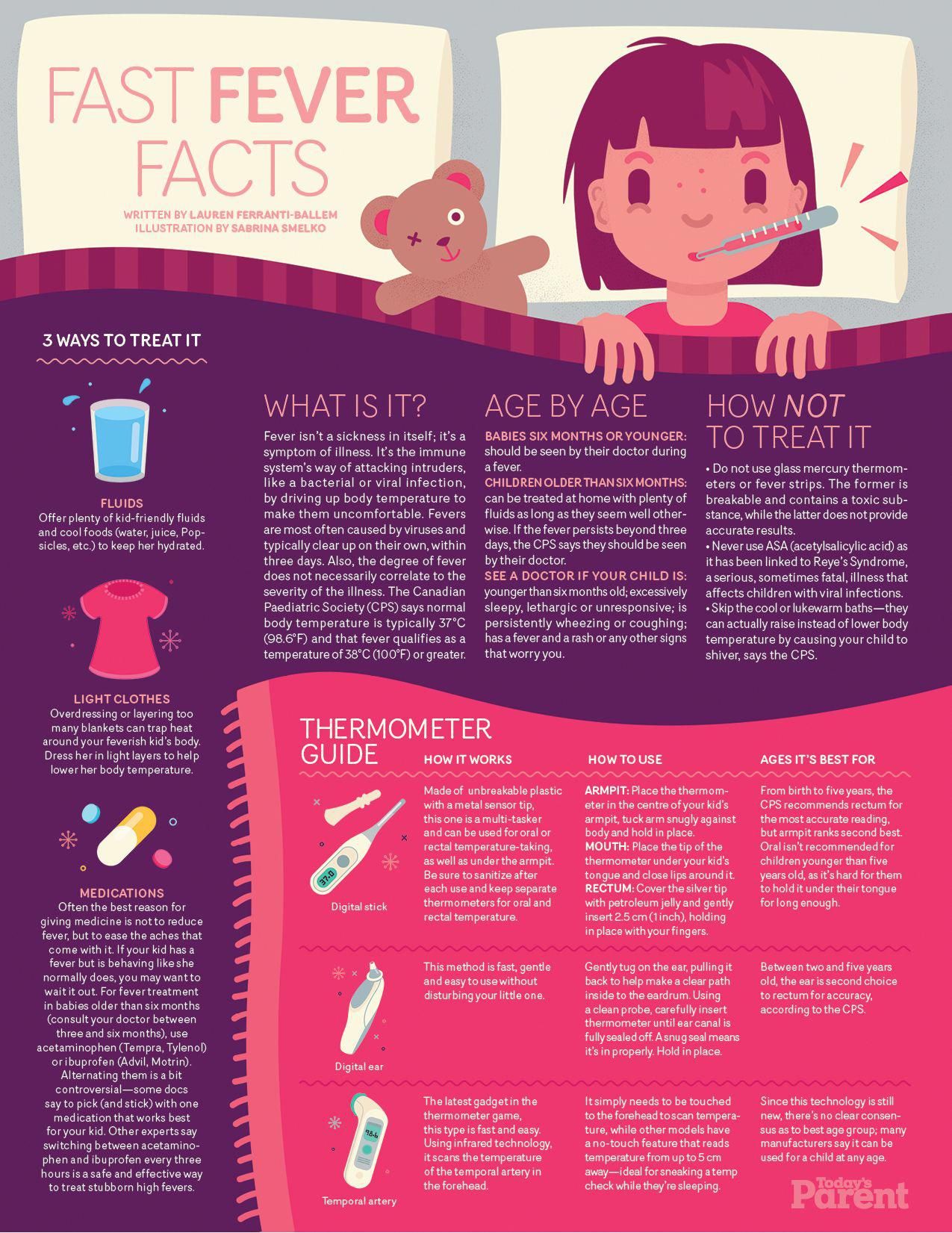 13 How to prevent white fever in a child children. Find out how to prevent the development of the disease and how to properly care for your child during illness.
13 How to prevent white fever in a child children. Find out how to prevent the development of the disease and how to properly care for your child during illness. The temperature is difficult to bring down with conventional antipyretic drugs. It is important to see a doctor immediately if you have a high fever.
The temperature is difficult to bring down with conventional antipyretic drugs. It is important to see a doctor immediately if you have a high fever. Bleeding can lead to severe anemia.
Bleeding can lead to severe anemia. Symptoms of white fever may begin insidiously, but over time they worsen and the patient needs immediate medical attention.
Symptoms of white fever may begin insidiously, but over time they worsen and the patient needs immediate medical attention. Children who travel with their parents to these regions are especially often infected.
Children who travel with their parents to these regions are especially often infected.

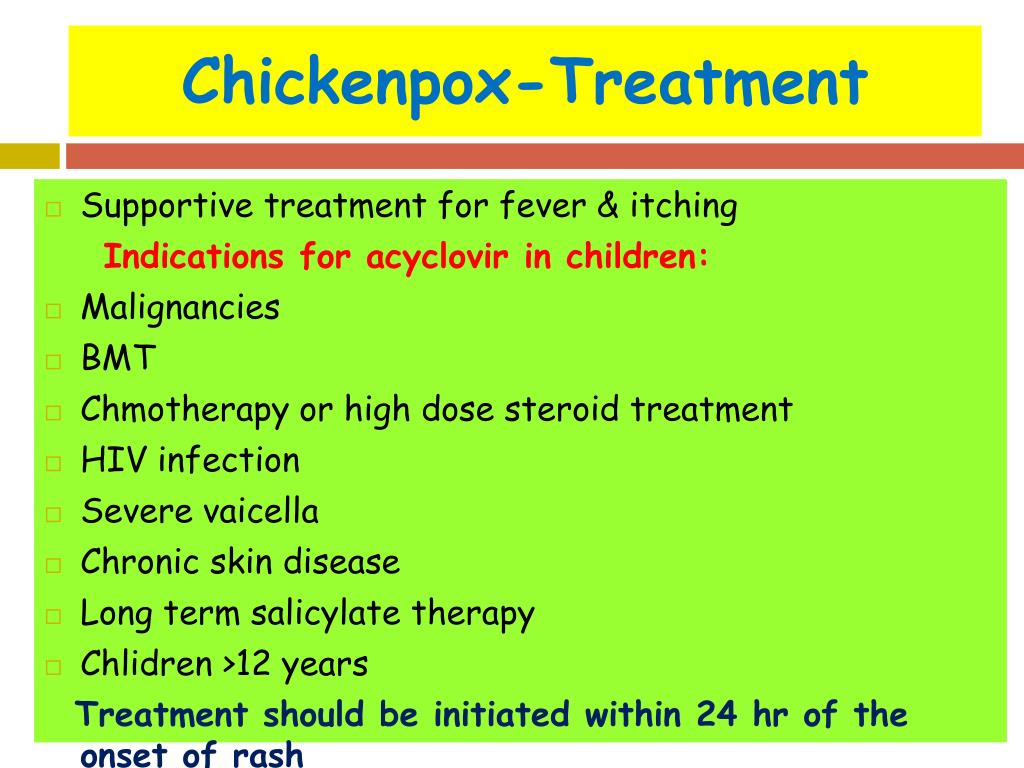 He must receive enough fluid and nutrients.
He must receive enough fluid and nutrients. It is recommended not to load the child with physical exercises or active games during the recovery period.
It is recommended not to load the child with physical exercises or active games during the recovery period.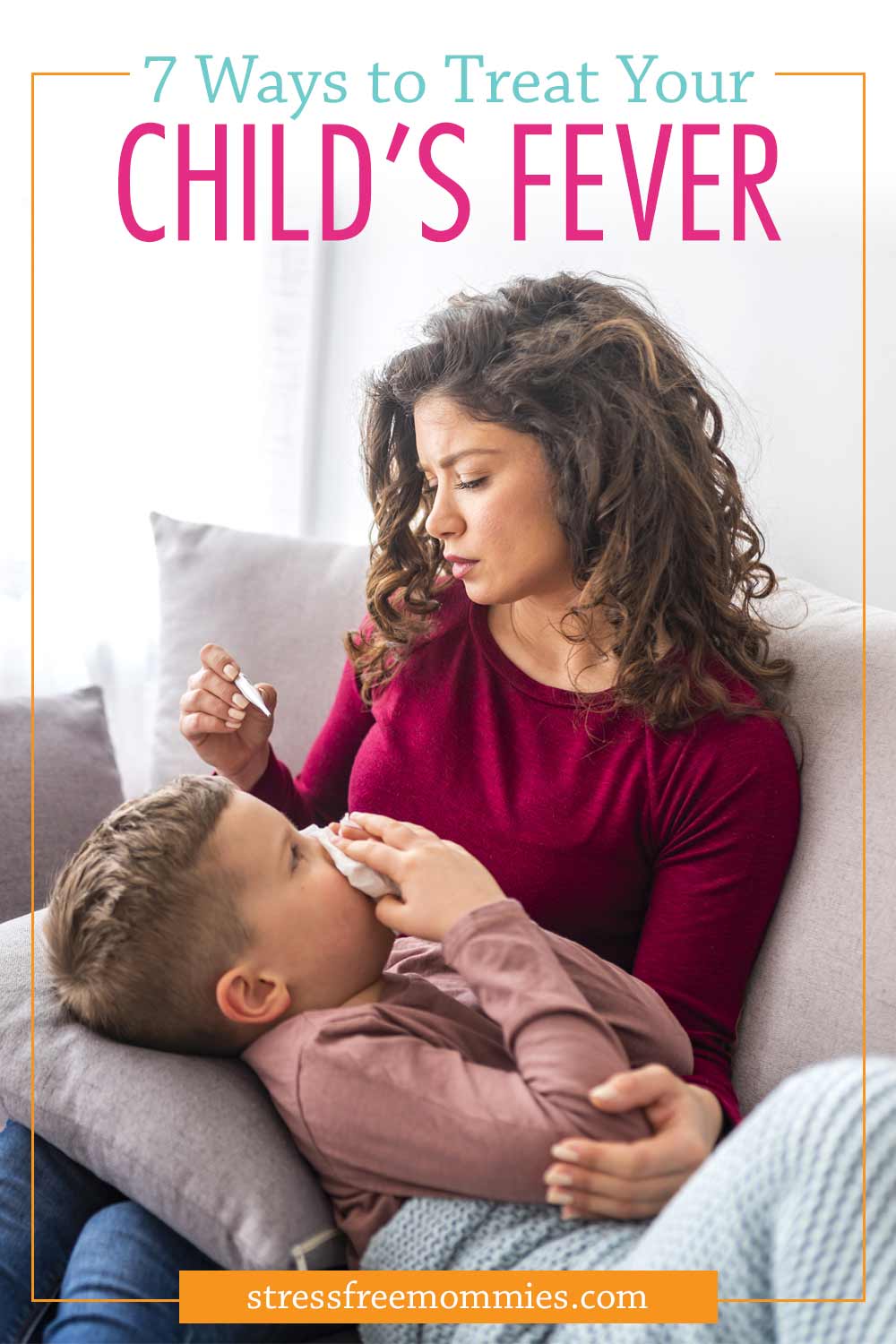 This fact can also create problems with behavior, loss of imagination and other activities that are not typical of a healthy child.
This fact can also create problems with behavior, loss of imagination and other activities that are not typical of a healthy child.
 If the child has contact with the patient, it is recommended to immediately consult a doctor and take the child for a special examination.
If the child has contact with the patient, it is recommended to immediately consult a doctor and take the child for a special examination.
 Children with white fever may also have rashes and bleeding.
Children with white fever may also have rashes and bleeding. This includes using repellents, wearing body coverings (especially in the evening and at night) and using mosquito nets on windows and doors. Vaccination is also an effective way to prevent white fever.
This includes using repellents, wearing body coverings (especially in the evening and at night) and using mosquito nets on windows and doors. Vaccination is also an effective way to prevent white fever.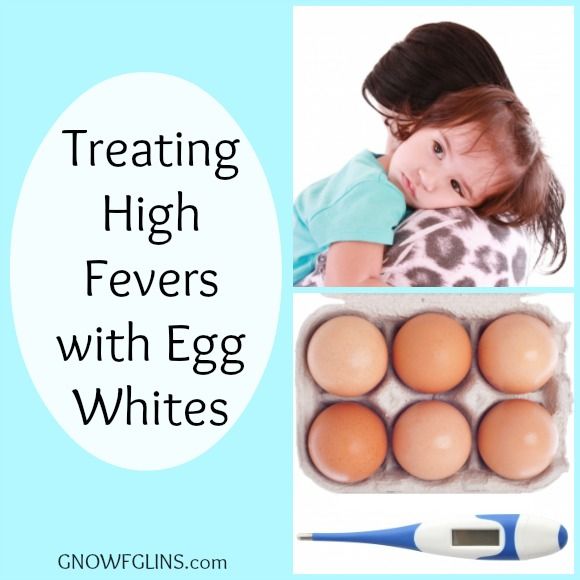 If left untreated, it can cause serious complications such as peritonitis and sepsis.
If left untreated, it can cause serious complications such as peritonitis and sepsis.